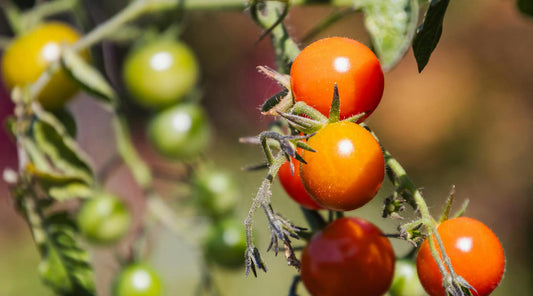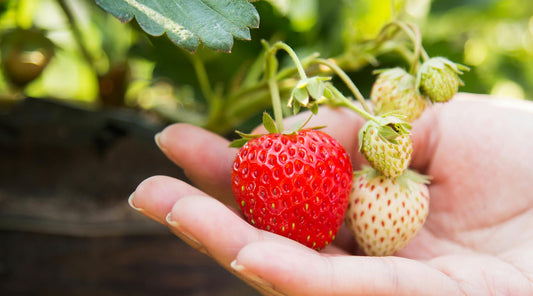As a father whose children have grown and ventured into their own lives, I’ve found solace and purpose in my garden. It’s more than just a patch of green; it’s a living testament to the years gone by and the memories we’ve cultivated. One of my most cherished projects has been crafting a living fence—a natural, green barrier that offers privacy, beauty, and a touch of nostalgia. It’s a project that not only gave my backyard a new sense of life but also reminded me how much joy can come from watching something thrive through care and time.
What Is a Living Fence?
A living fence is exactly what it sounds like: a fence made of living plants. Unlike wooden or metal fences, which can feel harsh or sterile, a living fence is vibrant, eco-friendly, and incredibly dynamic. It’s made up of hedges, shrubs, trees, or even tall grasses that grow into a natural barrier over time.
These fences offer numerous benefits. Not only do they provide privacy and define boundaries, but they also filter dust, reduce noise pollution, and contribute to local ecosystems. Birds, butterflies, and beneficial insects are often drawn to the shelter and food sources these fences offer. And unlike traditional fencing that needs replacing, a living fence gets better with age.
For me, building a living fence wasn’t just about blocking out the neighbors; it was about creating a peaceful retreat, a private garden space where I could enjoy a morning coffee or unwind after a long day with my wife and some sunset beverages.
Best Plants for a Living Fence (By Region and Climate)
Choosing the right plants is one of the most critical decisions when creating a living fence. You’ll want plants that thrive in your local climate, grow to the right height, and offer the look and feel you’re going for. Here are some of my top picks, broken down by climate:
Temperate Climates:
- Arborvitae: These are tall, evergreen conifers that grow densely and can reach up to 15 feet. Perfect for privacy.
- Boxwood: A classic choice that’s easy to shape and maintain. Great for a more formal look.
Mediterranean or Dry Climates:
- Italian Cypress: Tall and narrow, these are ideal for smaller yards.
- Lavender or Rosemary Hedges: Not only do they provide coverage, but their fragrance and flowers add a sensory experience.
Tropical Climates:
- Hibiscus: These fast-growing plants provide excellent coverage and offer stunning blooms.
- Bamboo: With proper containment, bamboo creates a lush, green screen in record time. (note: copper around the edges can help to keep this from spreading and taking over the entire yard.)
Cold Climates:
- Privet: Hardy and fast-growing, great for full coverage.
- Dogwood: Beautiful in all seasons, especially in winter when the colorful branches are exposed.
Always consider native plants—they’re often the best adapted and support local pollinators. Talk with your local nursery to find out what thrives in your area. You might also want to ask about trees suitable for espalier. Many types of pears and ornamental crabapples fit this bill.
Tools You’ll Need to Create a Living Fence
Over the years, I’ve learned that having the right tools can turn a daunting task into a therapeutic one. Here are the tools I personally recommend from Yard Butler that made all the difference:

- Twist Tiller: Perfect for loosening compacted soil. A must-have before planting anything substantial.
- Terra Tuff Hand Tool Bundle: These rugged tools help with digging, transplanting, and weeding with ease.
- Deep Root Irrigator: This tool delivers water right to the roots where it’s needed most, which is critical during the first year.
- Garden Hose Reel: Keeping your hose organized saves time and prevents damage to young plants.
- Landscape Rake: Leveling soil and clearing debris before planting is a breeze with this tool.
With these tools, you won’t just save your back—you’ll actually enjoy the process of building something meaningful.
Planning and Planting Your Living Fence
Before you grab a shovel, it’s essential to start with a plan. Sketch out your property, decide where the fence will go, and think about its purpose. Is it for privacy? Windbreak? A decorative backdrop?
Here’s a step-by-step to get you going:
- Measure the space: Knowing how much area you have will help determine how many plants you’ll need and what spacing to use.
- Mark the line: Use string or marking paint to ensure a straight fence line.
- Test and prep the soil: Use the Twist Tiller to aerate and mix compost into the soil.
- Choose plant spacing carefully: Consider mature width. Overcrowding will stress the plants.
- Stagger planting for layering: Taller plants in the back, mid-size in the middle, low groundcovers in front.
A little thought upfront can save you years of frustration and replanting.
Caring for Your Living Fence Year-Round
A living fence is not set-it-and-forget-it—it requires some TLC. But with the right routine, it becomes a joy rather than a chore:
- Watering: Deep, infrequent watering is better than frequent shallow watering. That’s where the Deep Root Irrigator shines.
- Mulching: Retains moisture and keeps weeds at bay.
- Pruning: Regular trimming encourages bushiness and prevents overgrowth.
- Feeding: Use organic fertilizers a few times a year to keep growth steady and healthy.
- Pest Monitoring: Keep an eye out for issues before they get out of hand. Your fence is a habitat—watch it closely.
I keep a garden journal where I note down watering dates, bloom times, and any pest sightings. It’s both helpful and strangely satisfying.
Creative Touches to Personalize Your Living Fence

A living fence can be as functional or as whimsical as you want it to be. I’ve added:
- Climbing roses and clematis to add bursts of seasonal color.
- Solar-powered string lights for evening ambiance.
- Birdhouses and bee hotels to invite pollinators and feathered friends.
- Decorative garden stakes to add personality.
Each element makes the space feel more alive and more you.
Why a Living Fence is More Than Just a Barrier
For me, the fence has become a metaphor. It’s grown slowly, needed attention, endured storms, and come out stronger. It reflects my journey as a dad—rooted, patient, and proud.
It’s more than a boundary. It’s a sanctuary. A natural canvas. A living memory wall.
And every time I walk beside it with a pair of pruning shears in hand, I’m reminded that the best things in life are grown, not bought.
Conclusion: Let It Grow, Let It Flow
Creating a living fence is about more than blocking a view or marking your land. It’s about building something alive, meaningful, and sustainable. With quality tools from Yard Butler and a little patience, you can grow a fence that gives back more than it takes.
So plant your roots. Shape your space. Let it grow—and watch it become something extraordinary.







